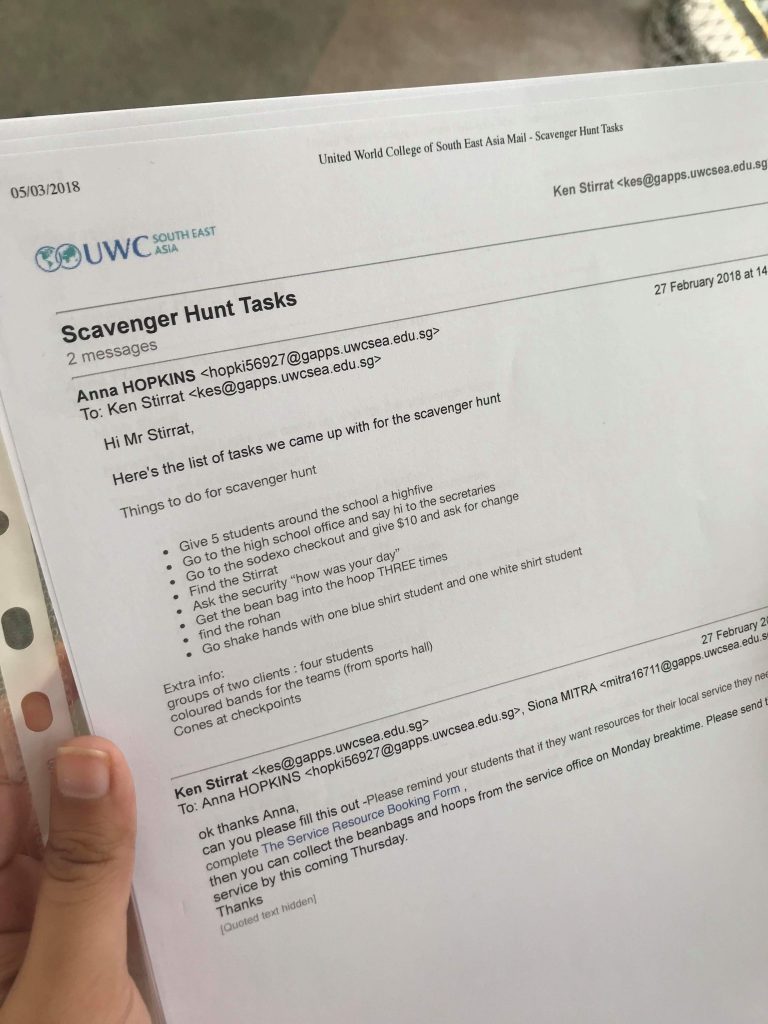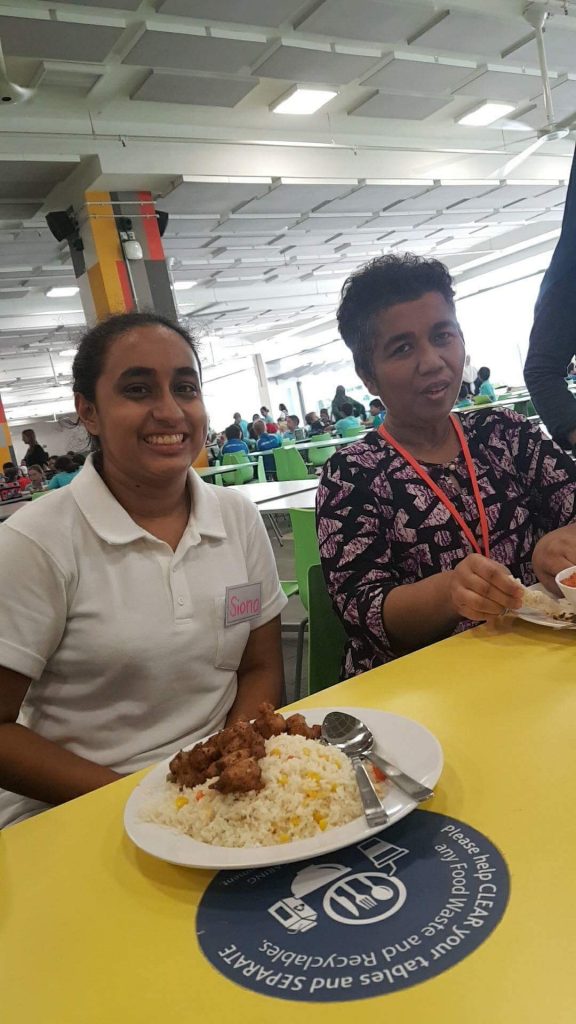local service
Sundac – Drum Project
SUNDAC – Scavenger Hunt
- What activities did I plan?
This week in Sundac, I planned the activity for today. My partner, Anna, and I decided to create a short scavenger hunt for the clients. We first took them to the hawker for a tasty lunch and to get them energised. After that, we brought them back to take part in the scavenger hunt. We split the clients up into groups of 1 client to 2 students to go through the things in the hunt. - What was the outcome of my planning? How do I know?
It was very successful. We got them interacting with the wider community and it seemed to really make them happy. The interactions between the clients and other members of the public warmed my heart. Due to our effective planning and pro-activeness, it was a huge success and the partners even asked to do another similar scavenger hunt later on in the year. - How did my plans change as the activity progressed? Why?
As the activity progressed, we saw some groups begin to form so we easily changed the group ratio and made it 2 clients to 5 students to get through the scavenger hunt at a faster rate. - What difficulties did I face in executing my plan? How did I overcome these challenges?
We realised towards the end of the activity, the clients became very tired so on the spot, we came up with the idea to go to the library to color as a way of cooling down. We were able to overcome these challenges by quickly adapting the plan as well as coming up with effective solutions as soon as they were needed. - How did I respond to changes in plans? Would I respond the same way in future? Why/why not?
Yes. I would like to have some spontaneity in plans more than sticking 100% to my original plan. Although it is great to have a solid original plan, it is also nice to be able to adapt as the activity progresses depending on the response.
Learning Objective 3 – INITIATIVE (Planning and initiated activities)
SUNDAC Local Service – My Group’s Session
This week, my group of 4 was in charge of the activities to do with the Sundac partners this week. We planned to originally play 3 games and have lunch.
We had planned to start with the hula hoop game for about 5-7 minutes as an energiser. Then we planned to head off for lunch then create 2 stations, one with bowling and the other with throwing beanbags through a hula hoop. Finally ending with a small ball passing session.
The planning prepared us well as we had a variety of different equipment which could be adapted to be used in other activities if we have extra time or if an activity does not go as planned. This is exactly what happened. We ended up eating lunch first as the clients were hungry causing our entire timeline to be changed. Lunch was also faster than anticipated and we had to come up with the stations faster than assumed. As the activities progressed, some clients were enjoying while others were not, we had to adapt to their needs in order to keep them interested throughout. We ended up adding a follow the action game, a name + action game as well as another ball game to fill time and to ensure that some of them do not get distracted/bored.
We faced a few difficulties. One of the clients at my activity had a melt down. She reacted very negatively by smashing a basket into the ground and sitting down on the floor in the plaza in frustration. I had to quickly adapt our plans and try to involve the client in a more positive activity. This is when we introduced the name and action game to involve her as well as hopefully dial her temper down. By reacting straight away and changing the cause of her frustration helped our group overcome the challenge smoothly as well as without making too much fuss. I believe that I reacted very maturely. I asked the Sundac staff to help with handling her as I did not want to get involved which could have caused a commotion. I think I will continue to react like this in the future because getting involved doesn’t ensure that the problem will be solved; it is more important that we adapt ourselves for the clients. In the end we are doing service for them and I understand that they have special needs that would require immediate care. As I am unaware of the disability the client had, I believe the best thing for me to do was stay out of it. I adapted whatever I could which was the activity.
A photo of us doing the improvised hula hoop game but backwards. We had to adapt the game as the clients were finding it so easy and getting board. We decided to make everyone go through the hula hoop without looking at each other.
A photo of me eating with one of the clients. She was very excited to take a photo with me while we ate our lunch.
Overall, I believe that our group’s planing and initiated activities were a success. Although it didn’t go entirely according to our plan we still managed to have the clients leave with smiles on their faces and a warm range of goodbyes, thank yous and see you laters!
This is a video of me leading an activity during the session.
Learning Objective 3 – INITIATIVE (Planning and initiated activities)
SUNDAC – First Visit
Cas Learning Outcome: 6 – Demonstrate engagement with issues of global significance
On the 25th of September 2017, the SUNDAC service group went on a bus to Bedok to meet our SUNDAC clients at the SUNDAC center for the first time. This was the first interaction I have ever had with people of different mental illnesses or disabilities.
Although we only spoke to a few clients for a short period of time, around 20 minutes, I can say that SUNDAC was nothing like I had expected it to be like. It was honestly quite heartbreaking and I felt really sorry for the clients but it also helped me understand how important service really is. After visiting them and seeing the state they are actually in, I believe that I am more motivated to help them integrate in society and for them to live happier lives. It’s so important for people to get past the social stigma against mental disabilities and help them be avid members of society. This does not only apply to those mentally disabled at SUNDAC or in Singapore, it applies to the world. Mental disabilities are not something to be afraid of, they should be understood and learnt about so the members of the public can help them in times of need and create relationships with them. They are present in every community and are in various different forms. It can be hard to understand and thats why I’m very happy I chose SUNDAC as my service as it will give me a chance to interact with mentally disabled in public which can help open the minds of the public. By seeing some teenagers from an international school interacting with the mentally disabled is a great step towards eradicating the social stigma. Although, completely getting rid of the social stigma is ideal, it will most likely not be reached but a little change can go a long way. Despite only meeting the SUNDAC clients once a week, I believe that I will be able to positively affect their lives for the better and hopefully I will be able to open other people’s minds as well.
A challenge that I think I will face when trying to work with the clients will be communicating with them as they do not always process or understand what I am trying to say. This will be a challenge but will definitely help me enhance my communication skills and make me more comfortable when communicating with different groups of people.






